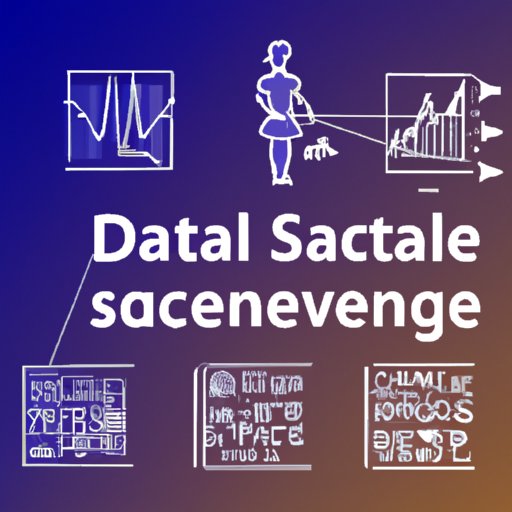Introduction
Data science and machine learning are two of the most important technologies in the modern world. They are often used interchangeably, but there are important differences between the two that need to be understood. This article will explore the similarities and differences between data science and machine learning and discuss the advantages of leveraging both of these technologies together.

A Comparison of Data Science and Machine Learning
Data science is a broad field that involves collecting, analyzing, and interpreting large amounts of data. It includes techniques such as statistics, visualization, and machine learning. Data scientists use these techniques to understand patterns in data and make predictions about future trends.
Machine learning is a subset of artificial intelligence (AI) that focuses on using algorithms to analyze data and identify patterns. The algorithms are designed to learn from the data and make predictions or decisions without being explicitly programmed to do so. Machine learning algorithms are used for a variety of applications such as image recognition, natural language processing, and autonomous vehicles.
The main difference between data science and machine learning is that data science focuses on understanding the data and drawing insights from it, while machine learning is focused on using algorithms to make predictions or decisions. Data scientists use machine learning algorithms to help them draw insights from data, but the focus is still on understanding the data. On the other hand, machine learning algorithms are designed to make predictions or decisions based on the data without needing any further understanding.
The Advantages of Machine Learning for Data Science
One of the main advantages of leveraging machine learning algorithms for data science is that it can greatly improve the accuracy of predictions. Machine learning algorithms can detect subtle patterns in data that would otherwise be difficult or impossible to detect. This can lead to more accurate predictions and better decision making.
In addition, machine learning algorithms can be used to automate certain tasks. For example, machine learning algorithms can be used to automatically detect fraud or anomalies in data sets. This can save time and money by eliminating the need for manual inspection.

Exploring the Intersection of Data Science and Machine Learning
Data science and machine learning are complementary fields. Data science provides the context and understanding of the data, while machine learning algorithms are used to make predictions or decisions. By combining the two, it is possible to leverage the power of both in order to solve complex problems.
For example, predictive analytics is a powerful tool that combines data science and machine learning. Predictive analytics uses machine learning algorithms to analyze data and identify patterns that can be used to predict future outcomes. This can be used to make better decisions and optimize processes.
Conclusion
Data science and machine learning are two powerful and complementary technologies. Data science provides the context and understanding of data, while machine learning algorithms are used to make predictions or decisions. By leveraging both technologies together, it is possible to solve complex problems and improve decision making.
In conclusion, data science and machine learning are both essential tools for understanding data and making informed decisions. By combining the two, it is possible to unlock the full potential of data and create powerful solutions to real-world problems.
(Note: Is this article not meeting your expectations? Do you have knowledge or insights to share? Unlock new opportunities and expand your reach by joining our authors team. Click Registration to join us and share your expertise with our readers.)
